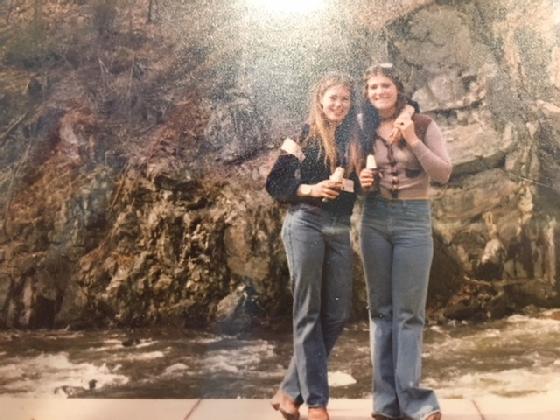Don't Blink.
2028 is around the Corner.
Happy 50th ReUnion!
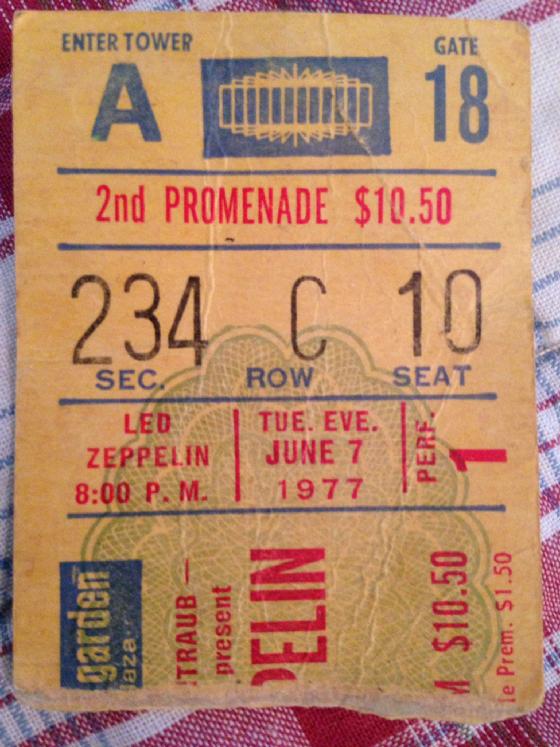
Timeline: 08:16h November 28, 2011
I may have already told this story here. I dunno…I find myself repeating certain things now and then. (Hey, sorry, but it’s what we older folks do, right?)
Anyway, a friend was telling me recently about “first concerts”, and how she used to follow a certain band in the ’70’s, and ended up dating a famous rock guitarist. True story. So I told her about my first concert.
It was fall 1975. Approaching the Bi-centennial year. Things were kinda upbeat; Ford was out, Carter was in. We officially made it more than halfway through that ugliest of all decades. We were 15, going on 16. Me and Ralph “Crash” Fasano, Farley King , Scott Rumery and KD-then-known-as Bones were in my parent’s basement, doing whatever we did in that dank subterranian hole with faux wood paneling, maroon shag carpets and a built-in bar (replete with spinning stools and a footrest).
At that point in time we were fans of the band KISS. (Cue: Groans.) Ralph turned us on to them; his older cousin Philip, a totally cool dude who hailed from an area known as “The Hill” in Yonkers, exposed Ralph. Philip was a tough guy from a tough hood: he used to regale me and Ralph with stories of participating in real-live gang warfare, the ‘Rumbles on The Hill’. The Hill was a famous spot for The Outsiders type teenage warfare. Think The Sharks and The Jets, West Side Story. Philip lived it.
Believe it or not, it was actually semi-cutting edge, almost cool to follow KISS back then; they were still relatively new and doing something avant-garde with their over-the-top costumes and make-up and pyrotechnics. Go figure.
So Ralph tells us KISS is playing on New Year’s Eve at the Nassau Coliseum on Long Island, and he knows how to call this new fangled ticket-by-phone service (Ticketron). All one had to do was dial the number, reserve seats, and pick up the tickets at the newly installed Ticketron booth the new Mohegan Lake Mall. Before this one had to go to the “Box Office” of the actual venue, wait on line and buy the tickets. Really hard to do as born in the boon-docker teenagers.
We were like “Yeah, right Crash. Ticketron. By Phone. I don’t think so. Tell us another”. So he dials (my dad, ever practical, installed a phone in the bar), speaks briefly, hangs up and says “We’re in. We got tickets. We’re going!”
We were suspicious. Then amazed. Then thrilled. Then ecstatic. We had never been to a rock concert. It was KISS! On New Year’s Eve!! (Now that I think about it, how did one reserve via phone in 1975? Crash definitely did not have a credit card…?)
Anyway, now all we had to do was find the dollars to pay for the tickets/venture, figure out how to get there (none of us drove, so Long Island might as well have been Mars), and most importantly, get permission from our parents….
Mrs. King, wise, wise woman that she was, flat out said NO. Farley was out. This was almost a deal breaker: Farley was our Fun-Meister; wherever he was, wherever he went, good times automatically ensued. But it was our first concert…we had actual tickets…for New Year’s Eve…to see KISS. Sadly, we had to march on without our Pied Piper of Fun.
Mrs. Dahl, knowing KD was ahead of his years and could figure out whatever jam we might get into, said YES. Maybe Mr. Dahl, Saint of a man that he was, greased the wheels, I dunno. My mom said no, then yes, then no, then yes. I don’t know how Crash and Rumery finagled it, but they were in.
So we are counting the days, hours, minutes, and finally the big day arrives. New Years Eve 1975-6. KD was the logistics man: don’t ask me how, but he figured out how to get from Croton Train Station to Grand Central, then from GCT to Penn Station, checked the LIRR train schedule from Penn Station out to Nassau, the taxi situation out to the Coliseum, all without benefit of the internet. In short, he shepherded us morons all the way there. On New Year’s Eve. More importantly, he was also on top of the reverse process: the last train out on New Year’s Eve to Penn Station from Nassau, then the last train from GCT to Croton. This was important: Mr. Dahl the Saint agreed to wait for and pick us up at Croton Station at 03:00h, or thereabouts.
So it’s New Year’s Eve, and we somehow make it out to the Coliseum, find our seats, and sit, rather impatiently, through two warm-up bands: Leslie West’s Mountain and Blue Oyster Cult. We have no idea who they are and could care less. We are there for KISS, and KISS only. As the night begins to wear on we are wondering when the heck they are gonna appear. Sure enough at the stroke of Midnight the stage erupts with fire and light and bombs and…Magic. We are astonished at the granduer of the sight, the magnitude of the sound, pinned back in our seats as the band literally bursts onstage. It is our first concert, our favorite band, New Years Eve! We cannot speak for joy.
They open with our favorite song, “Firehouse”. We are in awe. Thousands and thousands of black and silver balloons suddenly cascade down from the roof of the Coliseum, confetti and streamers are flying everywhere. It is mayhem, a cacophony of pleasure. It is the greatest show on earth, everything we could have imagined and much, much more and now we are up and jumping on our seats like fools.
The crowd is going absolutely nuts as Gene Simmons waggles his tongue and Ace Frehly and Paul Stanley romp around in their 13 inch platform shoes. It’s only one song in and it’s 12:04 a.m and….we have to leave. KD rouses us from our delirium and shouts “We gotta go NOW!!” We’re like “Whaaaa….? Now? But…it just started!” This must be some kind of mistake, a cruel joke perhaps. But he is the only one who knows what is going on, who actually did the legwork, scouted the terrain, figured an exit strategy and true to form he is completing the mission. We (somewhat) dutifully shuffle into the aisle behind him, past the happy thronging masses and out into the cold dark empty night. KD somehow finds the taxi stand (the rest of us are too dejected to do anything but mope with our heads down), and gets us on the train back to the city. He sprints us up 8th Avenue, from Penn Station to 42nd Street, and we just barely make it to GCT in time for the last train at out 02:10h. The long cold ride is silent. We roll into Croton, stumble off the train platform and there is Mr. Dahl, chipper as always, cigarette dangling down off his lower lip: “Hello boys!!” he says, “How was the concert?”
We live in the present,
We dream of the future,
But we learn eternal truths from the past.
Anonymous
Paul DePaoli, Casey Stengle, Tommy Scordato, Mike Perrelle, and Jerry Kolosky.

Most Musical, Class of '78: Geoff Zeiman and Karen Theiss.
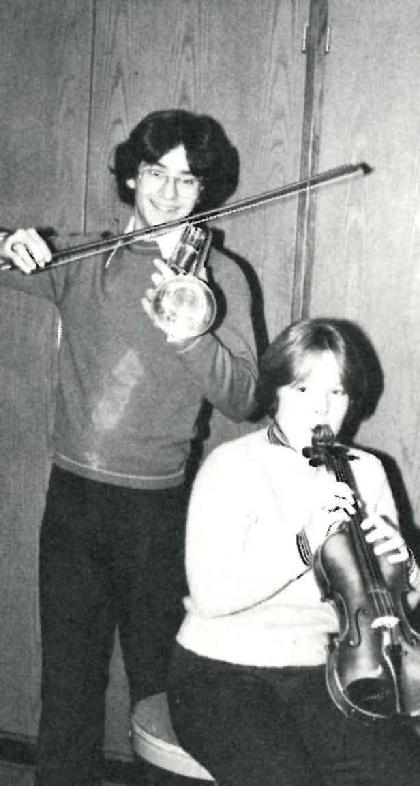
Timeline: 09:50h, Wednesday, 22 January 2020.
“Music, when soft voices die, vibrates in the memory.” Percy Bysshe Shelley
This one’s about music.
I am not a big audiophile. I enjoy music, but it has a very specific time and place for me. Sometimes, in the background, while I cook breakfast. Once in a long while in the car. I like to dance, but that only happens now at the rare wedding we’re invited to. Which is a good thing, as there is something tragic about a 59 year old white man dancing. And I listen to music while I work out.
I used to have an i-Pod, and I probably still would, if the new iterations of the i-Phone didn’t (suddenly?) do exactly what the i-Pod used to—that is, store and play all those songs I paid Apple too much money to download to my i-Pod. Now it’s all available via streaming, which I won’t figure out how to use until that’s on the brink of being obsolete, too. Oh, the travails of being born in 1960: too old to be truly facile with ever-changing technology, and too young not to be.
It could be different, I could have learned all about it at the beginning. At Panas in 1978 they had a burgeoning “Computer Club”, made up of the same seven nerds (geniuses) who were in the A/V club. You remember those mysterious souls who were entrusted to handle the overhead film projectors, the P.A. system in the auditorium, morning announcements, etcetera. If a teacher wanted to run a filmstrip but didn’t want to be stuck by the projector for the entirety of, say, Lamorisse’s The Red Balloon, he could tap into the A/V club and get a trained, trusted nerd (genius) to take care of it while stepping out for a smoke. Yeah, I used to snicker at the A/V and computer club members (geniuses). Now they sign my paycheck—or their sons and daughters do.
So I purchased 12 different versions of the i-Pod, and myriad headphones and music over the years for one reason and one reason only: the music being blared at my gym by the 24-year old trainers was making me insane. The stuff was simply wrong, and possibly harmful. Maybe even fatal. Because, you know, I don’t sound like I’m a million years old here….
In sum, I regularly don my headphones (ear-pods?) to listen to pre-purchased music while I’m at the gym, essentially to prevent me from throttling some muscle-bound Millennial.
And, as usual, all this ya-ya is a prelude to a memory, or memories really. Ya see, my downloaded-by-a-dummy obsolete Apple music is mostly composed of artists and songs that I listened to in high school, perhaps a bit from college, very little from thereafter, and only a fraction contemporaneously (i.e. Chris Stapleton).
In the main, when one of my favorite songs comes on, two things happen. One: I smile. Two: I remember. And I guess that is what Tennessee Williams meant when he said “In memory everything seems to happen to music.” I might alter it to: “In music everything seems to happen to memory”.
Here’s how it goes. When the given song comes on, I think the following (a brief sampling):
Midnight Train to Georgia, Gladys Knight and The Pips. 7th grade. 1972. I had a girlfriend, my very first. Laurie Franz. I had a transistor radio. My very first. I turned it on after dinner every night, and called Laurie on the phone. This song always seemed to be playing.
Dancing In the Moonlight, King Harvest. This song came on next.
He Ain’t Heavy, He’s My Brother, The Hollies. My big brother Bob would put this on the phonograph when I was little, and then stare at me until I cried. I have two older brothers that carried me, literally and figuratively, my whole life. Still do. And I can still get choked up a bit when I hear this song.
At Seventeen, Janis Ian. This song sort of made me feel normal, and not normal, when I was seventeen years old. And fifty-nine. My wife despises the song, and me, for sort of liking it.
Both Sides Now, Joni Mitchell. Debbie V. Full stop.
Your Song, Elton John. Eddie Cancellieri, a huge fan of Elton back in the day. We were in his garage, and Eddie was trying to convince me of EJ’s relevance in 1973 with this very song.
Tiny Dancer, Elton John. This song convinced me.
I’d Love to Change the World, Ten Years After. KD, Farley and I were thumbing through my older brother’s record collection. KD pulled out this Alvin Lee classic, knowing nothing about it, and said “let’s try this”. We played it over and over for the next hour.
Over the Hills and Far Away, Led Zeppelin. Paul Depaoli. His mom brought us down to Seaside Heights for a long weekend. Ninth grade, maybe. We were on the boardwalk, debating Led Zep vs. Allman Bros. I was touting Midnight Rider by the Bros. He countered emphatically with: “Even my mom likes Over the Hills and Far Away!!”
On the Hunt, Lynyrd Skynyrd. Dre. Probably because we were both, figuratively, “on the hunt” as every teenage boy was, and will be, forever. I think Dre and I connected on this one because at the time, neither one of us were very good hunters. Figuratively, of course. Just couldn’t locate the prey, as it were. Or, IF we found it, we spooked it on approach, or we had the wrong arrow in our quiver, or we shot too low, or too high, or we forgot to string our bow, or wax our string…I could play with this metaphor all day. Happily, Dre figured it all out in college: I’m told he was quite the Casanova. Quite. Me, not so much…but I still like the song.
Got to Give it Up, Pt. 1, Marvin Gaye. Dre, again. We were at some club, or wedding or some such when this song came on. Post college. And Dre got up and danced with a lady and I understood right then and there the whole Casanova thing. The dude could groove.
Dixie Chicken, Little Feat. KD turned me on to Little Feat, senior year, spring lacrosse trip to Massachusetts. The Panas laxers were being put up overnight by the MA team. KD and Crash spent the night instead sleeping in Hagar’s van, parked behind a strip mall, partying. I still wonder how they got away with that.
Simple Man, Lynyrd Skynyrd. Tommy Scordato. Full stop.
Julia, The Beatles. Danny Arnold. We were up way too late one night at college, and Danny played this song for me. And he told me how John Lennon wrote it for the mother he barely knew, who died in an automobile accident when John was young. And it kind of freaked me out because I always carried an unrelenting fear that my mom would die before I was able to really convey to her how much I loved her. And I wanted to call her right then and there in the worst possible way, but it was 04:00h. My mom is 94, and still lives in Peekskill. And she knows now how much I love her. Thanks Danny.
Things Goin’ On, Lynyrd Skynyrd. 11th grade. KD and I were in his dad’s Dodge Dart. It was the Saturday morning of a home football game; we arrived together early and hadn’t suited up yet. KD parked down by the field, and we were discussing the intricacies and mysteries and wonders of the female of the species. This song was on the 8-track.
24 Hours At a Time, The Marshall Tucker Band. Tommy Scordato. Full stop.
Me and Julio Down By The Schoolyard, Paul Simon. Lakeland Middle School. All of it.
Lean on Me, Bill Withers. Ibid.
Sympathy for the Devil, The Rolling Stones. Ninth grade. I was in the rear seat of Richie Mellone’s ridiculously cool ’68 sky-blue Camaro (’71? ’73? Mustang? GTO? Sorry Rich, I’m terrible with cars…). Richie got his license way before any of us, and he could drive a stick, which blew my mind. (He owned a motorcycle too, which also blew my mind). We were on the Bear Mountain extension, going way too fast. This song was on, loud. First time I ever heard it.
Father and Son, Cat Stevens. Mrs. Berkman’s 8th grade English class, 1973. We broke down the lyrics line by line. She used a little suitcase phonograph and a 45. Avant-garde teaching back then. I wonder if she got grief from her supervisors for playing us kids this semi-subversive, counter-culture (at the time) music.
The Ocean, Led Zeppelin. Farley and me. We were discovering rock n’ roll together, and this one always made us play air guitars, before “air guitars” was a noun.
Linus and Lucy, Vince Guaraldi Trio. Can anybody our age hear this song without being immediately launched back into their childhood living room and the PeanutsTV specials?
It Keeps You Runnin’, The Doobie Brothers: KD, Crash and I went to a Lynyrd Skynyrd concert at the Nassau Coliseum. We visited Bones Dahl beforehand (he was matriculating at Hofstra). Skynyrd was the warm-up band, and when they exited the stage I thought there was going to be a riot. We were in the nosebleeds, but on the floor a phalanx of Skynyrd die-hards charged the stage, Confederate flag held high, scattering hippies left and right. It was cool. But here’s the thing: The Doobie Brothers came on, sang two songs, and won the crowd over completely; the Coliseum went utterly still. They were that good. It Keeps You Runnin’ was the second of those two songs.
Tush, ZZ Top. Scott Klarer and I had somehow befriended each other. He drove this, this…thing. It was cream colored, and I don’t know what kind of car it was, but it ran (barely). He picked me up, put this song on the 8-track, and said: “I’m taking you to meet my friend, Eddie Reilly.”
Eddie Reilly
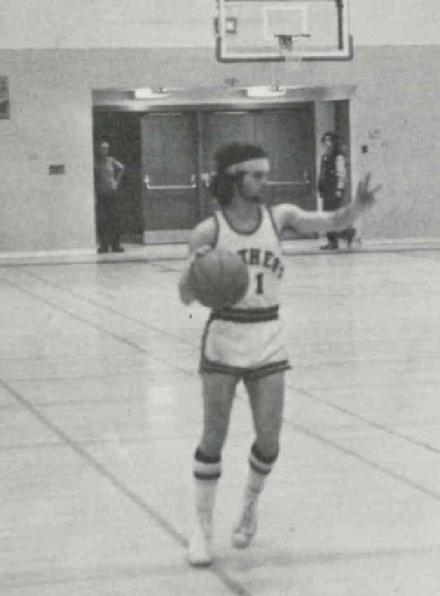
A Charlie Brown Christmas. 1965. And...Timeless.
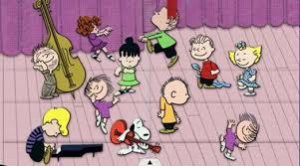
Every life has a soundtrack. There is a tune that makes me think of the summer I spent rubbing baby oil on my stomach in pursuit of the perfect tan. There’s another that reminds me of tagging along with my father on Sunday morning to pick up the New York Times. There’s the song that reminds me of using fake ID to get into a nightclub; and the one that brings back my cousin Isobel’s sweet sixteen, where I played Seven Minutes in Heaven with a boy whose breath smelled like tomato soup. If you ask me, music is the language of memory.
Jodi Picoult
Dre
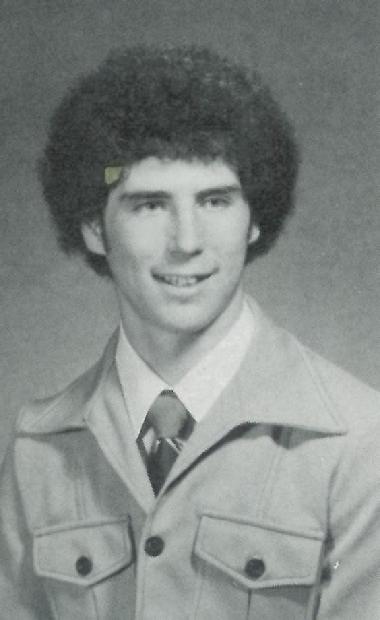
John Val., Zee, Ann, Deb, Dre, Riles
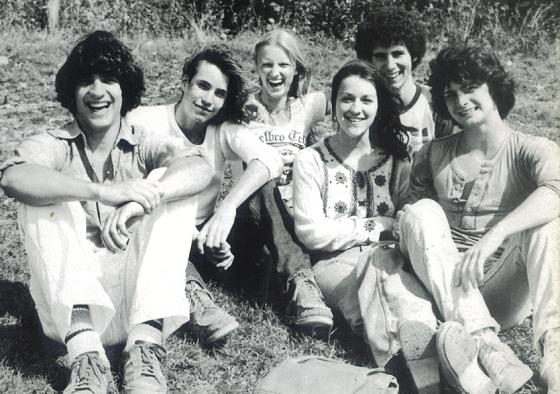
Richie Mellone
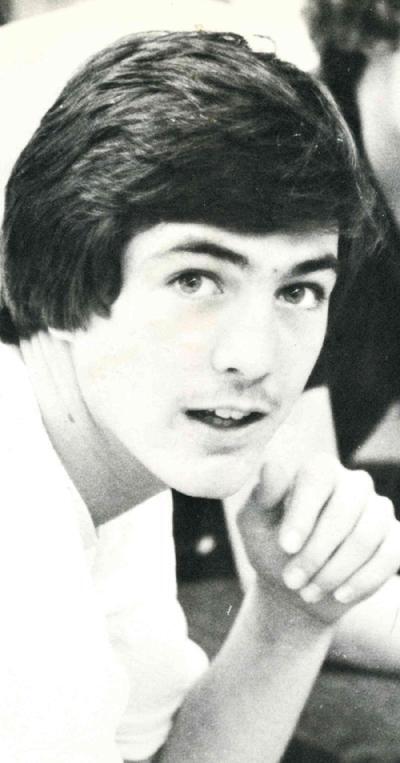
KD: Sports Illustrated - Faces in the Crowd - June 1978
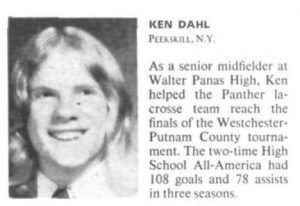
Paul
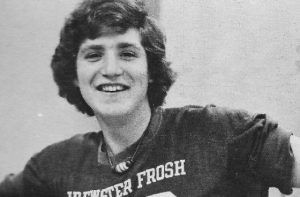
So good was Tom Seaver in 1969 that Reggie Jackson once said of him, “Blind men come to the park just to hear him pitch.”
Tom Verducci, Tom Seaver and the Enduring Hope of the 1969 Mets
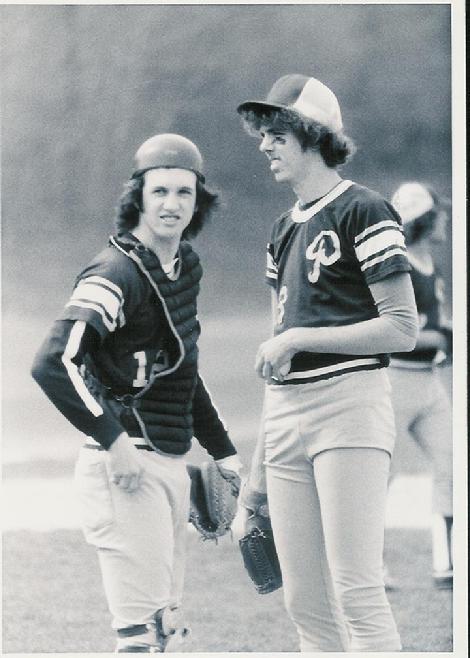
How can you think and hit at the same time?
Yogi Berra
Gary Tepper
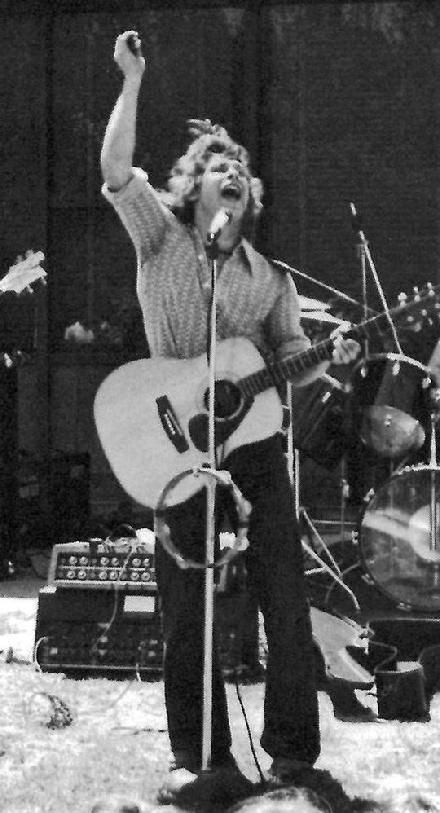
Marianne Zeoli
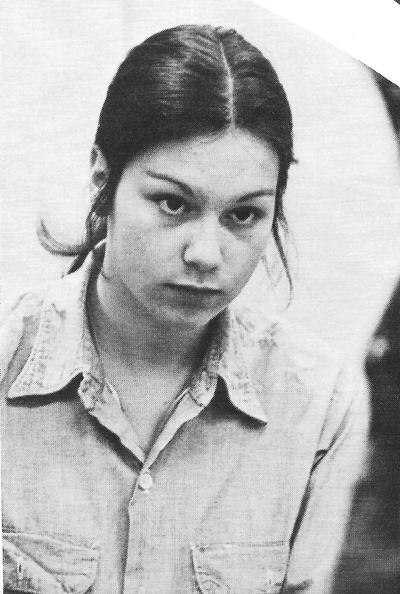
Bear Mountain Bridge

The Hudson River is like old October and tawny Indians in their camping places long ago; it is like long pipes and old tobacco; it is like cool depths and opulence; it is like the shimmer of liquid green on summer days.
Thomas Wolfe
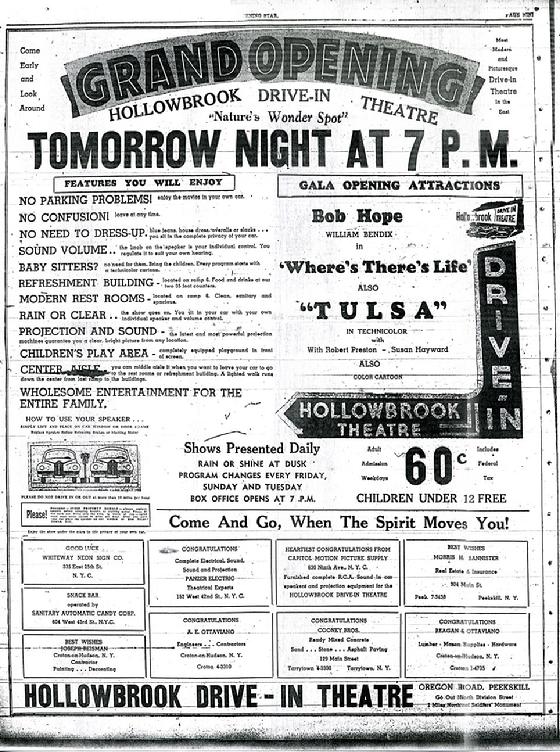
|
The length of a film should be directly related to the endurance of the human bladder.
Alfred Hitchcock
|
The Hollowbrook Drive-In, c. 1998
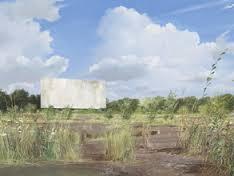
Walter Panas High School’s Top Ten Hang Spots!
Meet Me Friday Night at…
The results are in and it seems some things never change. For the last month we have been taking your votes hoping to find out where we might have found you all on a Friday or Saturday night.
Based on the returns it seems that the students in the 1970’s were paying a little too much attention to their partying and not enough attention to their school work. I guess the booze helped you guys deal with having to grow up in the 1970s (just kidding guys!).
That being said, let’s get to the results…
Top Ten Hang Out Spots Back in High School:
10. Hollow Brook Inn
9. The Dunes (Behind Caldor)
8. Tamarack
7. Lou’s Corner Store
6. Hunter Brook Pub
5. Peekskill Riverfront (pre-Green days)
4. The Quarry
3. Charles Point
2. Papa Bears (Oregon Rd and Westbrook Drive)
And Walter Panas High School’s Favorite Hang Out Spot is (was)…
1. Croton Dam!
©Walterpanas.com 2001
WPHS Narcotics Officer, Rodney. He definitely earned his Keep:)
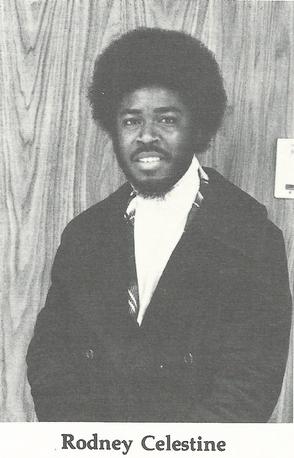
Carol Elser and Ellen Boyle
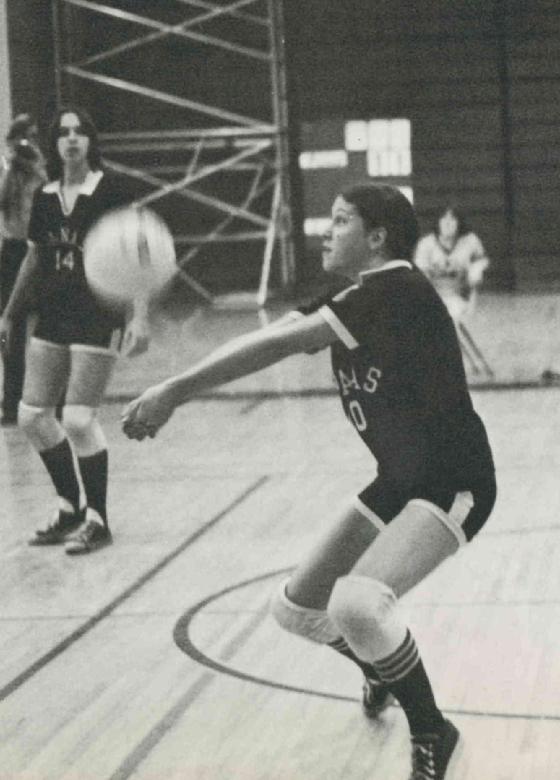
Volleyball: Invented by men, perfected by women.
Anonymous
Our Gang, "Hi Neighbour" Episode, 1934
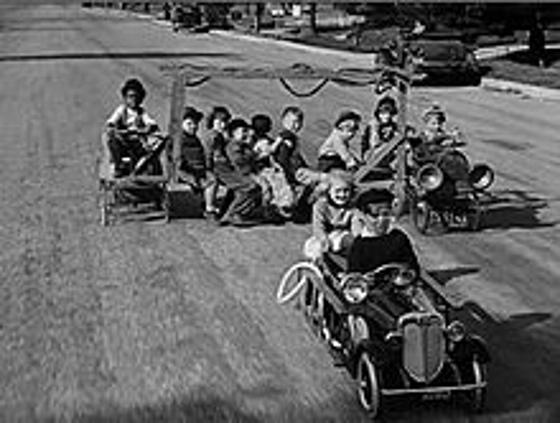
According to Hal Roach (creator of the Our Gang series), the idea for Our Gang came to him in 1921, when he was auditioning a child actress to appear in a film. The girl was, in his opinion, overly made up and overly rehearsed, and Roach waited for the audition to be over. After the girl and her mother left the office, Roach looked out of his window to a lumberyard across the street, where he saw some children having an argument. The children had all taken sticks from the lumberyard to play with, but the smallest child had the biggest stick, and the others were trying to force him to give it to the biggest child. After realizing that he had been watching the children bicker for 15 minutes, Roach thought a short film series about children just being themselves might be a success
The Westchester Mall, c. 1978
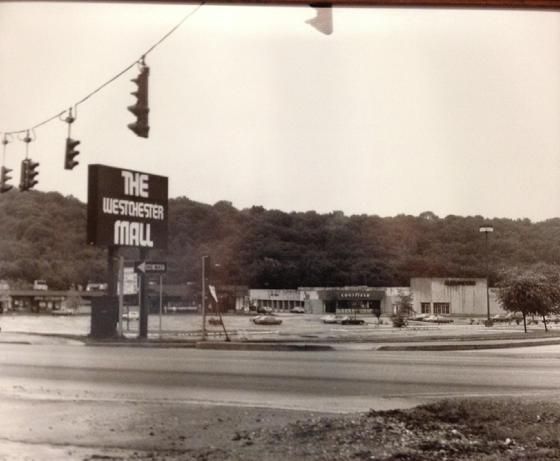
|
Mall. (n.) 1737, “shaded walk serving as a promenade”, generalized from The Mall, name of a broad, tree lined promenade in St. James Park, London (so called from 1670’s, earlier Maill, 1640’s), which was so called because it formerly was an open alley that was used to play pall-mall, a croquet-like game involving hitting a ball with a mallet through a ring, from French pallemaille, from Italian pallamaglio, from palla “ball” (see ballooon) + maglio “mallet” (see mallet). Modern sense of “enclosed shopping gallery” is from 1963. Mall rat is from 1985.
|
Janice Kirstein and Gaynell Singer, April 1978
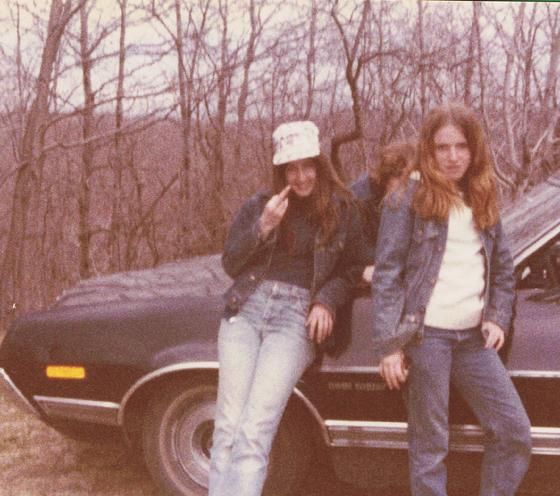
|
Never lend your car to anyone to whom you have given birth.
Erma Bombeck.
|
Walter Panas High Senior Prom Program 1978.
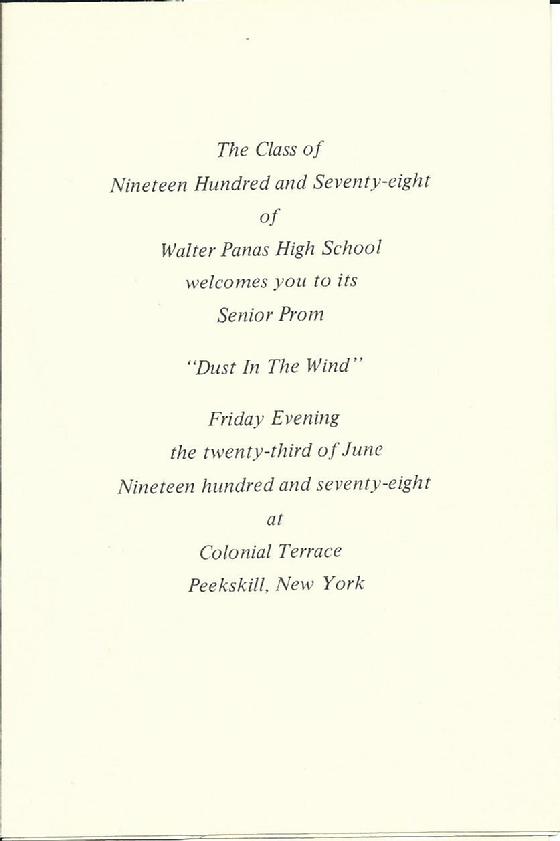
“Dust in the Wind” is a song recorded by American progressive rock band Kansas and written by band member Kerry Livgren, first released on their 1977 album Point of Know Return. The song peaked at #6 on the Billboard Hot 100 the week of April 22, 1978, making it Kansas’ only top ten Billboard Hot 100 charting single. The 45-rpm single was certified Gold for sales of one million units by the RIAA shortly after the height of its popularity as a hit single.
A last-minute addition to the track lineup for Point of Know Return, “Dust in the Wind” would also be its greatest success. The guitar line for the song was written by Kerry Livgren as a finger exercise for learning fingerpicking. His wife, Vicci, heard what he was doing, remarked that the melody was nice, and encouraged him to write lyrics for it. Livgren was unsure whether his fellow band members would like it, since it was a departure from their signature style. However he did offer it to them, and the song was accepted and then recorded.
A meditation on mortality and the inevitability of death, the lyrical theme bears a striking resemblance to the well-known biblical passage Genesis 3:19 (“…for dust thou art, and unto dust shalt thou return.”), as well as to the famous opening lines of the Japanese war epic The Tale of the Heike (“…the mighty fall at last, and they are as dust before the wind.”), but the actual inspiration was from a book of Native American poetry, which includes the line “for all we are is dust in the wind.
WPHS Senior Prom Program 1978. p. 2
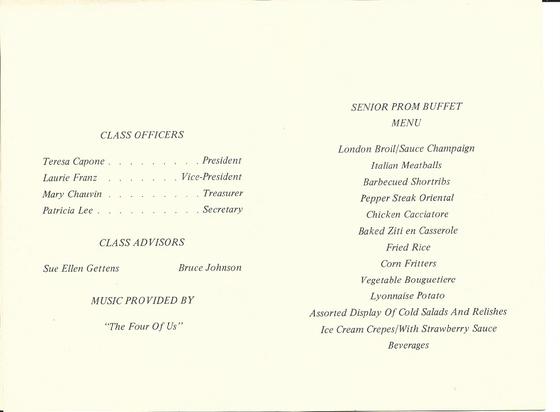
It wasn’t that no one asked me to the prom. It was that no one would tell me where it was.
Rita Rudner
Ray Scalone
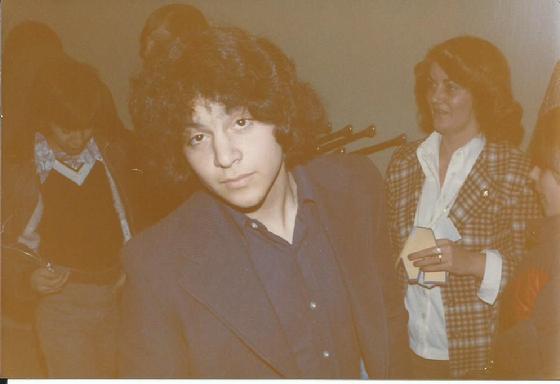
|
In the beginning, there was nothing. Then God said, “Let there be light”. And there was still nothing but you could see it.
Groucho Marx
|
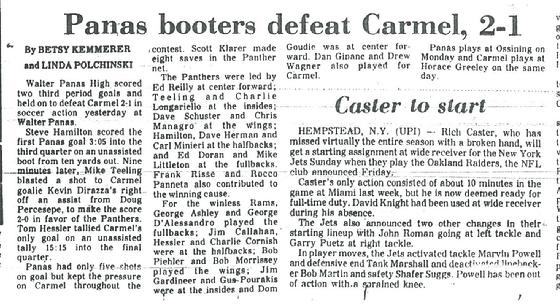
I think foosball is a combination of soccer and shish-kebabs.
Mitch Hedberg
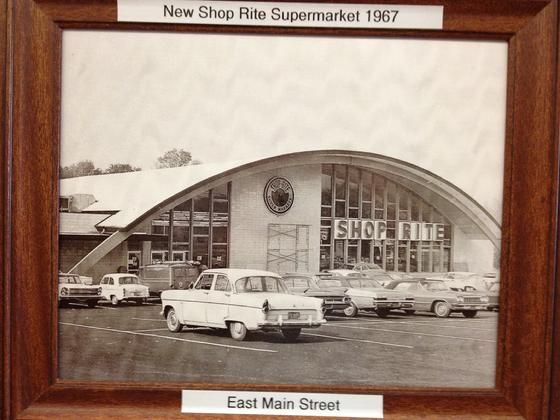
Following the end of the Second World War, the end of food rationing and the lifting of price controls marked the beginning of a troubling time for the independent grocer. During the war, customer loyalty to independent grocers was strong, but afterward, the bigger self-service supermarkets were offering a wider selection at lower prices and frugal shoppers took notice.
In 1946, in an effort to assist these struggling grocers, a sales representative from Del Monte Foods introduced eight independent grocers from Newark, New Jersey to the concept of cooperative buying. Collectively purchasing products in large quantities at a lower cost allowed these grocers to offer their customers the same goods at an unprecedented, competitive price. Pleased with the results, on December 5, 1946 this cooperative relationship was formalized. Each of the seven grocers invested $1,000 and Wakefern Food Corporation was born.
The Birth of “ShopRite”: 1951
For the first few years, the Members of Wakefern advertised under their own names. But in 1951, they decided they could be more competitive, and spread the word about their great prices by advertising under one name — ShopRite. They saw an immediate jump in sales. All of the Members then added the ShopRite name to their stores, and its success attracted many new Members. Within a year there were over 50 Members of the cooperative, and the growth in volume lead to hiring more buyers, moving to larger warehouse space, expanding trucking operations, enlarging their stores and developing a private label brand.
The Trading Stamps Decision: 1958
By the mid-1950’s trading stamps had become a consumer craze with thousands of devoted collectors. Many supermarkets were “giving away” stamps, and the ShopRite owners met to decide if they too should join the craze. The arguments were heated, but in the end they decided not offer stamps. However, they knew they would have to do something to fill the merchandising void. One Member offered a radical suggestion: “Let’s cut grocery prices by 10%.” The Members trusted the customers’ eye for value, and the ShopRite “Low Price Leader” image took root.
On The Way to #1
By the end of their first ten years in business, there were more than 70 ShopRite Members with an annual sales volume of $100 million. After the trading stamps decision, ShopRite became a major player in the New Jersey market, and even began attracting independent grocers from surrounding states.
There were setbacks, of course. In the late 1960’s, ShopRite lost nearly half of its wholesale volume when its largest Member, Supermarkets General, withdrew from the cooperative. (They later named their stores Pathmark). This setback inspired the remaining members to embark on a major expansion program, opening new stores and focusing more of their purchasing power on the cooperative. Within three years, these efforts resulted in growth which replaced the lost volume.
Today, ShopRite is the largest retailer-owned cooperative in the country.
Donny Puhala
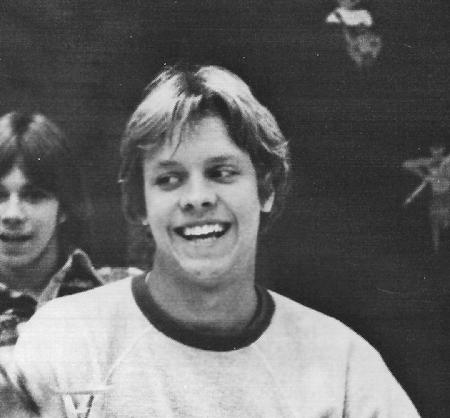
Timeline: 10:35h December 22, 2013
One of my favorite songs of all time is “Done Somebody Wrong”, as performed by The Allman Brothers Band.
The lyrics, to me, have always made perfect sense, and sort of define how I always felt about everything: “It’s all my fault, I musta’ did somebody wrong…” Some might think this a selfish, self-centered way of operating, and perhaps (on one level) it is. But I see it another way: I see it as a practical expression, the embodiment and application of that age-old and universal aphorism: ‘You reap as you sow’.
I bring this all up, as usual, because my wife and I were talking this past weekend, and she was asking me why I take things ‘so-to-heart’; why, as she put it, “you live your life so enmeshed in self-blame. Everything isn’t always your fault, ya know.” “Oh, yeah?” I replied, “Than riddle me this: exactly whose fault is the economic crisis?”
So, during my discussion this past weekend with my wife I was reminded of an episode that occurred during my time playing high school football at Panas High (all roads seem to lead back there for me, don’t they…it’s kinda sad.)
I described it to my wife as I remembered it:
It was our junior season, and we had a pretty good team that year. Mike Savarise was our quarterback, a pure athlete, so gifted, and constantly at war with his own demons. Ed Schiefelbein was his favorite target. Ed was (is) one of the best athletes to ever come out of Walter Panas High, period. John Ricci, Sean Bowdren, Jimmy Haviland, Seth Kaplan, Paul Russo, Mike Howard, Mike Simunek…lots of real good athletes from the class of ’77 were on that team.
There was a budget problem that year, as there was every year in our school district in the 1970’s (culminating of course with the prolonged Teacher-Union strike during our senior year). The net effect was that, although the football program wasn’t actually cut, our schedule couldn’t be finalized until after the budget vote passed (or didn’t), that is, late summer. So that season we took on who-ever we could get: teams who still had room in their schedule to play us. For example, we played Poughkeepsie, a school way out of our normal travel range, and Gorton, a tough Yonkers team from the opposite end of the county, whom we had never faced before. And, interestingly, for the first and only time, we played Lakeland twice that year: our first and our last games of the season. [They were having school budget problems too (no surprise, same district), and had the same last-minute scheduling dilemma as us].
Anyway, we lost a close one in the season opener at Lakeland. Then we reeled off a string of five straight wins. As I said, we were good that year, so good that I think we kind of surprised ourselves. Suddenly we were 5-1, and heading into the season finale against our arch enemy Lakeland. They also were very good, led by a ferocious middle linebacker named Kenny Kienle (he went on to play at West Point). They were 5-1, too.
It was a big game, obviously, to be played on our home field. Mike Perrelle, myself, and Kenny Dahl, all juniors, were the starting defensive backs on that team. My job, my specific task that day was to cover their tight-end, Jeff Guerra. Per Coach Scozzafava, I was to “not let him touch the ball, at all, ever, end of story. Got it, man!?!”
“Yeah, Coach, I got it….”
So, the game was on, and it was a real slugfest, and it was late, very late, in the 4th quarter. I was doing okay so far. I don’t think Guerra caught anything (significant) to that point in the game. If I remember correctly, the score was tied 0-0, or 6-6; it was a nail-biter. They had the ball deep in our territory, and their quarterback dropped back for some sort of pass play, and our blitz was on. Whatever their set play was, it was broken-up, and in desperation their quarterback semi-lobbed the ball behind the line of scrimmage to Jeff Guerra, who was nearby as the outlet. I held my position, and was right with him (thankfully), and I lowered my head and dove in take him down low. I had him. And then, I didn’t. Something happened, there was a collision, and suddenly I was on my back, and the crowd was roaring, and Jeff Guerra was running across the goal line. Ed Schiefelbein was on the ground next to me, and we exchanged one long, forlorn look, and hoisted each other up.
And we lost the game by that one touchdown.
Well, I still remember, right now, the leaden pit in my stomach as my older brother and his (stunningly pretty) girlfriend drove me home from the game. They, quietly trying to console me with small talk and platitudes, and me, having none of it. None…of…it.
We lost the game by one touchdown, and it was all my fault.
That next week I skipped the final team meeting, and the review of the game film. I couldn’t face it.
And that night, after the team meeting, my friend Kenny Dahl called me on the phone. “Soos”, he said, “it wasn’t your fault. You gotta see the game tape. It wasn’t your fault at all.”
But I wasn’t buying it. None…of…it.
Fast forward seven years. Go past my senior year, and four years of college, and one year into the ‘work force’, my so-called professional life. It’s 1983, and I am woefully under-employed, working as a substitute teacher at, yes, my alma mater Walter Panas High during the day, and as a ‘Nautilus Instructor’ at a local health club, at night.
My great buddy Kenny DaRos was subbing at Panas at that time, too. He would sometimes watch old game films in the gym office during his lunch break. He encouraged me to watch some film; this one particular time I did, and it happened to be the Lakeland-Panas game, our junior year, 1976. And I finally saw what happened, I saw how and why I missed that tackle, seven long years after the fact.
It all unfolded as I remembered it, the broken play, the shovel pass to Guerra, me right there going for his legs…and then Ed Schiefelbein came barreling in. Schief, as I said earlier, was a tremendous athlete, the best guy we had on the team that year. He went on to have a distinguished collegiate career at William and Mary, one of only a handful of Panas grads ever to play football, and play it well, at that level.
So Schief came thundering in to take Guerra’s head off, and ended up taking off mine. He ran right over me, and that is how I found myself suddenly on the ground, with Schief by my side, and Guerra strolling into the end zone.
There is a picture in the Class of ’77 yearbook, a picture I only saw one time. It is of my backside, you can just see the number 33, and it captures the exact moment that I’m diving at Jeff Guerra’s legs. And just barely entering the right hand frame of the photo is Ed Schiefelbein’s extended foreleg. It’s the moment before impact, the impact that tore me off of Guerra’s legs, the impact I never imagined happened, the impact I never forgave myself for.
Truth be told, I still don’t. Ya know, if I was just a little quicker, a little better positioned, I might have gotten between Guerra and his quarterback, and batted that pass away…
But it’s all my fault, I musta’ done somebody wrong…
I do not own the Class of ’77 yearbook. If anyone does, and can scan that photo, and send it to me, I would be extremely grateful. Very grateful, indeed. It might provide me with a small measure of comfort, I guess.
Or, at the very least, I could show it to my wife;)
Done Somebody Wrong by Elmore James (As performed by The Allman Brothers Band, Live at Fillmore East, 1971).
“The bell has tolled, my baby caught that train ‘n gone
The barrel-house told me, my baby caught that train ‘n gone
It was all my fault, I musta’ did somebody wrong.
Everything that happens, you know I am to blame.
Everything that happens, you know I am to blame.
I’m gonna find myself a doctor, perhaps my luck will change.
Ah, my mamma she told me, these days will surely come.
I wouldn’t listen to her, had to have my fun.
The barrel-house told me, my baby caught that train ‘n gone.
But it’s all my fault, I musta’ done somebody wrong, oh yeah.
The barrel-house told me, my baby caught that train ‘n gone
The barrel-house told me, my baby caught that train ‘n gone
It was all my fault, I musta’ did somebody wrong. Lord, play the blues…”
All My Fault...
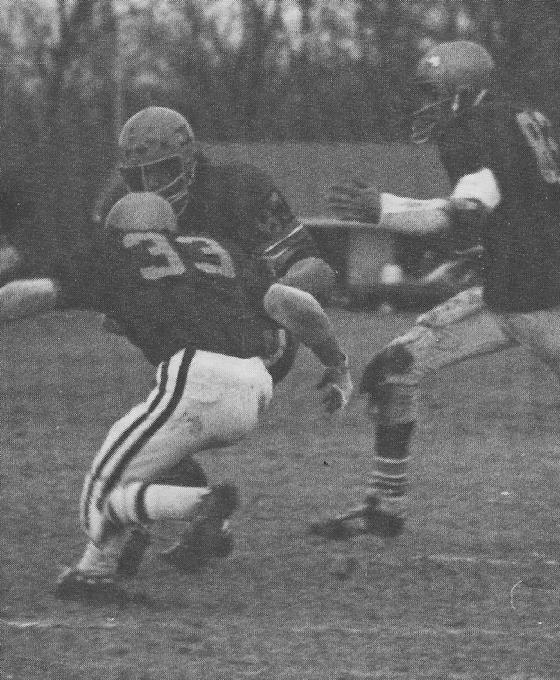
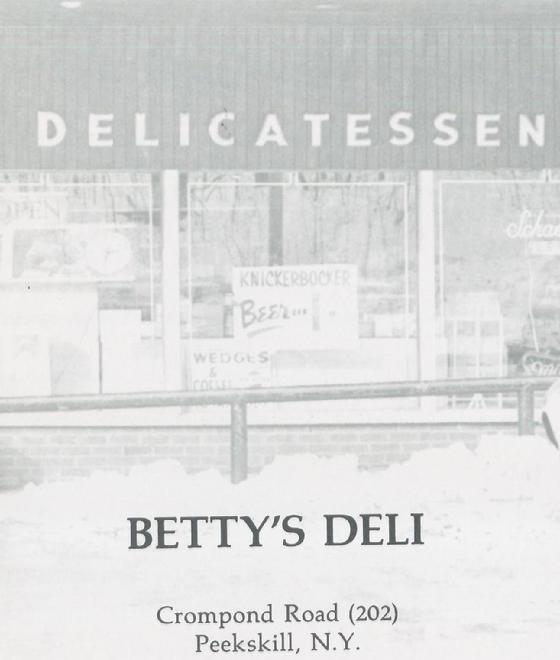
What worries you, masters you.
John Locke
October 21, 1977. The morning after the crash of the plane carrying Lynyrd Skynyrd. Guess who the Skynyrd fans are: Richie Bobik, John King, Jerry Kolosky, Mike Perrelle, Tommy Scordato.
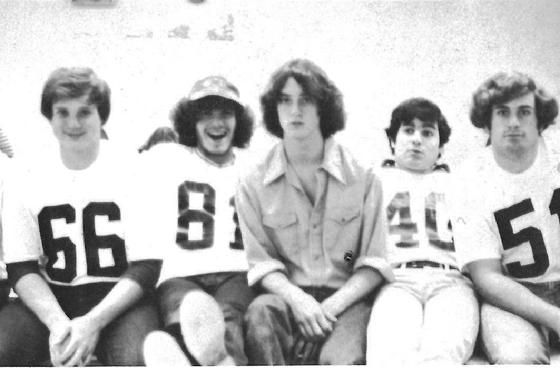
Coach John Sarkissian
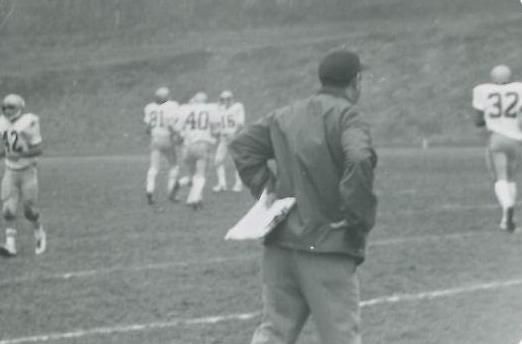
Johnny Gesson
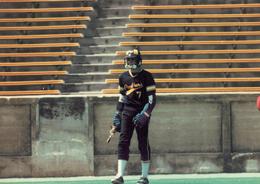
Tommy Scordato
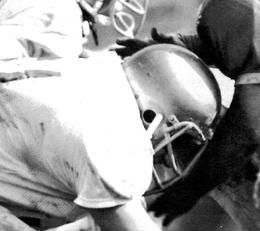
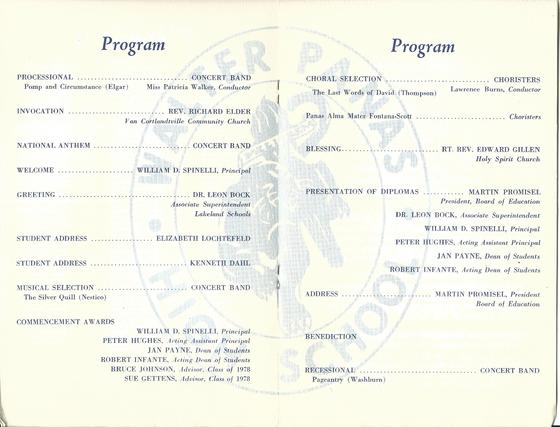
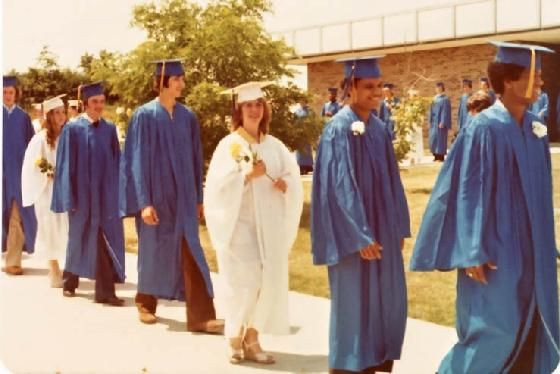
Panas High circa 1978 Trivia:
-
Who was inside the Panther costume?
-
What was Mr. Rancier’s nickname?
-
Who wore the Gorilla suit to school occasionally (and why)?
-
Who was the starting Quarterback?
-
Who was the Student Council President?
-
The best party of 1978 was: a) Spaten Dark; b)New Year’s Eve; c)Every party at Farley’s house?
-
Name the cast of Saturday Night Live c.1978?
-
Who had the coolest T-Bird ever to grace the parking lot at Panas?
-
Name the editor of Paw Prints?
-
Which uber-popular teacher, on a dare, belted out BTO’s “You Ain’t Seen Nothin’ Yet” at a Friday Night dance?
-
Who was the MVP of the ’78 World Series?
-
Who was the Homecoming Queen?
-
How deep (supposedly) was the Quarry?
-
Whose class was easiest to cut, bar none (hint: Math)?
-
Who was the Assistant Principal our Senior Year?
-
Who was the school “Narc”?
-
Who was the opponent on Homecoming weekend (extra points: what was the final score)?
-
What was the Prom theme song?
-
What is a “Gammon”?
-
Senior Cut Day was held at: a)Croton Dam; b)Mohansic State Park; c)Farley’s house?
-
What is a “Trobe”?
-
Can you identify the following by nickname: “Nate”; “Lips”; “Java-Man”; “BoneNeck”; “Cube”; “Spanky”; “Ze-Zay”; “Dr. No”; “Boney W and Boney A”; “Rocky”; “Crash”; “Haggar”; “Bowmar”; “Sark”; “Bogart”; “Niles”; “Brother”; “Hanbone”; “Yid”; “T-Bird”; “Raisinhead”?
-
Who was the first (and last?)WPHS Athlete to appear in Sports Illustrated?
-
Name the members of “Reality”?
-
Where (or what) was the “New Toad”?
-
What was the best Pizzeria in Peekskill, hands down?
-
What were the Musicals during our four years at Panas (this is a bonus question)?
-
Who were the members of the Outstanding WPHS 1978 National Championship Debate Team? (That’s right: National Champions. You can Google this one)
Terese Calderon
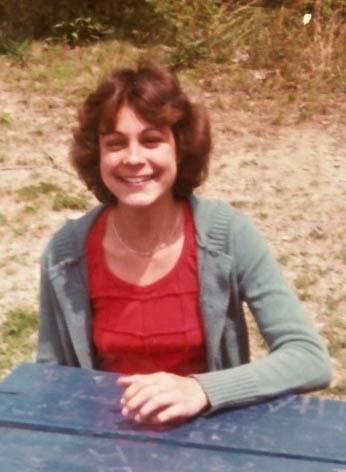
Richie Mellone
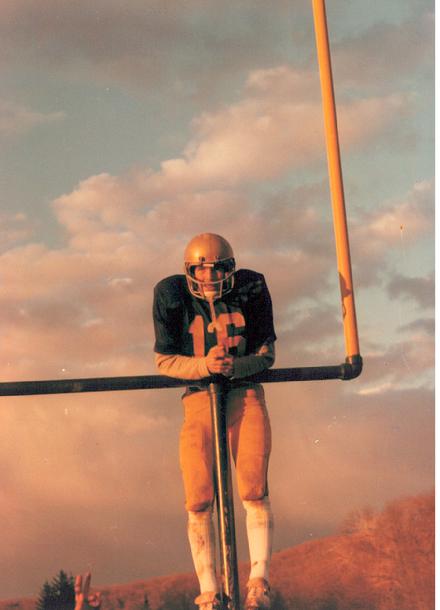
Service to others is the rent you pay for your room here on Earth.
Muhammed Ali, quoted in the Norwich, Conn., Bulletin
Jimmy Fleitz
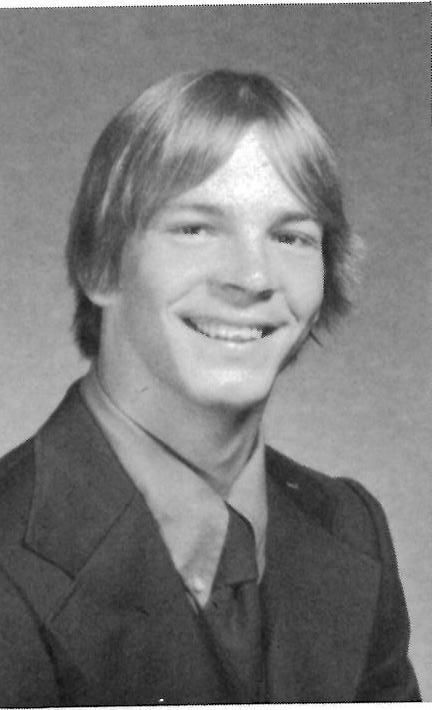
Jimmy Fleitz, Michie Stadium 1978, Panas v. Croton
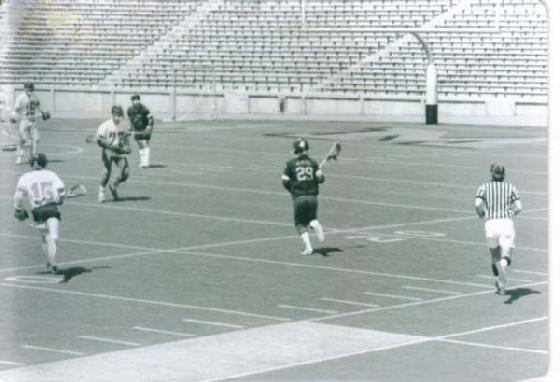
Timeline: 13:12h 27 February 2013.
Trust me, I know that there are lots of places with a lot more natural beauty, but something that I took for granted growing up in the Peekskill area was how many bodies of water there was to swim in, skate on, and fish in. Places that one could walk to, or that were a short drive away. I live down county now, and there are no ponds, lakes, streams, creeks, or other natural swimming/skating holes available: None. They’re all either on private land and fenced off and inaccessible, or they’ve been paved over/built on top of. Where I live now, they really have paved paradise and put up a parking lot.
When my daughter was younger and we wanted to go ice skating outside, we ended up driving 25 miles north (!) to the FDR State Park in Yorktown (formerly Lake Mohansic). It was the closest and best option.
In contrast, me and my neighborhood buddies had a three minute walk up to Lockwood’s Pond (right near Timmy Hogan’s house). It wasn’t necessarily swimmable, but we fished for sunnies there all the time, and it was the site of some über-fun ice hockey games (Right Wing: John Vallorosi. Starring in goal: Paul “Dr. No” DePaoli).
When I was small we used to swim at Lakeland Acres, a great spot on Oregon Road. It’s long since gone: currently that property (the old Jamison spread) is the home of the Hollow Brook Golf and Country Club. When we were a bit older, Mrs. DePaoli would take us all up to Lake Osceola, in Jefferson Valley. That lake used to feel like a summer vacation, with boats and floating docks and lakeside restaurants: it was paradise for us kids. (Thanks Mrs. D!)
In high school, when we could drive, the world was our swimming-hole oyster. Putnam Valley was a treasure trove of lakes, with Oscawana, Lake Peekskill, Dennytown and Indian Lakes, to name a few.
Scott Klarer was head lifeguard and Eddie Reilly beach boy captain at Lake Peekskill. We used to bring our girlfriends and swim up there on summer nights. Scott turned some of us on to the many pleasures of the best Put Valley spots, most notably Roaring Brook Lake, off Pudding Street (ahem.)
Cortland Lake in Continental Village, known simply as “The Lake”, no doubt figured (and probably still does figure) in many a WPHS grads’ youthful escapades. Ibid for Lake Mohegan, an idyllic little place that used to be a bungalow retreat for summering NYC residents, replete with lakeside handball and basketball courts. My good friend Kenny DaRos was a lifeguard there. Lake Mohegan was where he and Danny Arnold and Eric Blattman honed their very considerable athletic skills. (My mom currently lives in a condo on that lake).
The best water to swim in, but a place we had to work hard to get into (and out of if the cops came) was the Croton Reservoir. That water felt like silk on the skin, and refreshed like no other. I’m sure I’m leaving out so many great places: creeks and swamps, lakes and ponds that were part of each of the dozens of neighborhoods us Panas kids grew up in (Lake Allendale, for instance: sorry, Perse).
I remember during our senior year, after KD and Tony Maresco were accepted to West Point, a bunch of us spent an idyllic summer afternoon exploring “Hell Hole”, a fast moving stream fed by Popolopen and Mine Lakes just across the Hudson. It starts way up in Bear Mountain, runs through USMA property, and eventually drains into the River. It is (or was) a rocky and fast moving creek with a series of small, pristine plunge pools and waterfalls. We hiked about ten miles up Popolopen Creek that day, and discovered for ourselves a whole new world…
I’ve told this story here before, but since we’re talking about swimming spots, I’ll tell it again. One of the more notorious places to swim, and familiar to all ‘Panas grads, was “The Quarry”. Supposedly it was a, uh, well, it was an old rock quarry. The story goes that once upon a time the workmen were digging and accidentally struck a subterranean pool. The place filled up so fast that the cranes and bulldozers (and men) are supposedly still down at the bottom. They say it’s hundreds of feet deep; the Quarry did have a haunted feel to it. The body of water is surrounded on all sides by almost sheer granite walls, and the more daring kids among us (Wayne Lowe and Bobby Spost and Dicky Miskell) would dive and somersault off of the highest cliffs. I couldn’t even bring myself to jump feet first off of those things…. The Quarry is (was) accessible by footpath only, and there used to be a well travelled path from Panas High to it.
One spring day late in the school year, a bunch of us cut out of school to swim for a couple of hours. Farley was there, Mike Leonard, Eddie Reilly, Lips, Zee-Zay, Spanky, Dre, maybe a couple more. It was blazing hot, and the Quarry was like a reflecting bowl in that heat. Guys generally didn’t wear anything but jeans and t-shirts to school in 1978 (cargo shorts didn’t exist) so swimming there on a school day meant butt-naked or skivvies. We piled all of our clothes on the rocks and jumped in. After a time some guys got out to have a smoke (everyone smoked back then); a match was carelessly flung too near the large pile of clothes. We didn’t notice until it was too late, and after a momentary freak-out during which some items were tossed into the water, we took stock. Turns out my left sneaker was now at the bottom of the quarry with those old bulldozers, my Fruit of the Looms were incinerated, and my left Levi’s pant leg was burned off up to just below the crotch. Everybody else’s stuff was fine. Well, that seemed to be the funniest thing in the world to everyone there. Dudes were falling all over each other in glee…all except me, that is: we walked to the place; we still had afternoon classes; we were all squarely on Mr. Hughes’ and Ms. Payne’s nuisance radar, and…what was I supposed to wear back to school?
Somebody broke out a Swiss Army knife and fashioned an early version of blue jean hot-pants. I looked ridiculous, but I had very little choice. Back we went through the woods. I don’t remember how the rest of that day played out; selective memory, I’m sure. Footnote: I got poison ivy hiking out of there…
Sean Mackey and Kevin Flood
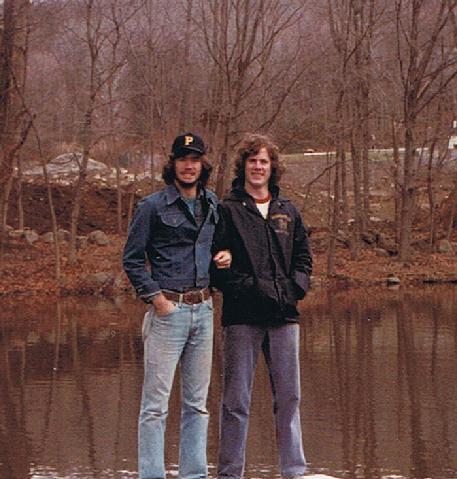
NY Jets, Practice, DePew Park, 1965.
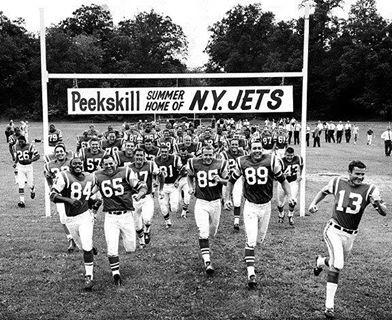
Croton Dam

Never confuse the stockmarket with the economy.
Ronald Reagan
Clay Welch
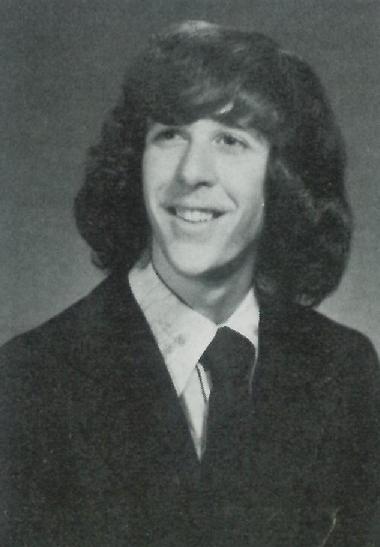
Timeline: 12:41h 09 July 2009
This is a long one, so bear with me.
I felt like a caged animal in high school; way too much adolescent energy, and no place to vent it. Consequently, I absolutely lived for gym class. (Thirty years later I still need to go to the gym daily to feel right).
1978 was about the time Co-Ed gym was invented, soon to become de-rigueur. Before that there was a girl’s gym class, and a boy’s gym class. They did what they did, and we were sub-human animals. We began to see the co-ed thing in our freshman year; by our senior year it was firmly established. No offense, but it never made sense to me.
My favorite game was floor hockey. I loved it. We had some epic games in the neighborhood, the Cancelleri’s, Vallorosi’s, Dr. No, Beef, Steve Corradina, Jack Behen…epic. Gym scrums were way too short and way too organized, but I still relished winter when floor hockey was a possibilty on the gym class menu.
During one particular game the ball was rolling toward the sidelines and out of bounds. I chased it hard and just as I reached it a girl I did not know kicked it away from me. I admit it, I lost my temper. I shouted something unpleasant in her direction.
The next day was my seventeenth birthday. I remember I had on my birthday present, a new flannel shirt. As I walked into first period English, the doorway was blocked by a nice kid I knew but vaguely. “I want an apology” he barked belligerently. “What for?” I barked back, belligerently. “You cursed my girlfriend”, he answered and
“BAM!”
He punched me in the face. Then he proceeded to beat the living hell out of me. The substitute teacher was weeping. Desks and chairs were overturned. John Vallorosi and Richie Mellone pulled us apart. My shirt was in tatters (so was my face).
I was sent to the Principal’s office.
And that was it. I got there and I started crying, and I could not stop. I wasn’t hurt; I guess it was four years of teenage frustration and angst pouring out. I was disgusted with myself for crying, but to no avail. I couldn’t answer the principal’s questions. I just cried.
Witnesses were summoned. John Vallorosi came in and asked me if I was OK. I turned away and blubbered yes. Richie Mellone came in asked me if I was OK. I turned away and blubbered yes.
My friend Eddie Clark heard about it and came in. Same thing. I could not look at them or speak through the tears.
The school nurse was sent for; they called my dad and told him to come and get me.
I waited, crying.
Then Mrs. Wilma Mann, a hall monitor known to some of us as “Mom” came in. She just walked over to me and hugged me. She said nothing. And she held me like I was her own, and like she understood it all. And that small act of Kindness meant everything, and has stayed with me all of these years.
Thank you Mrs. Mann, wherever you are.
Mrs. Mann
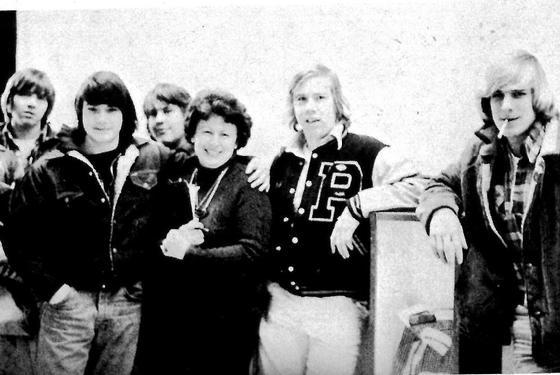
|
Never bend your head. Always hold it high. Look the world straight in the eye.
Helen Keller.
|
Ann Andrews and Scott Klarer
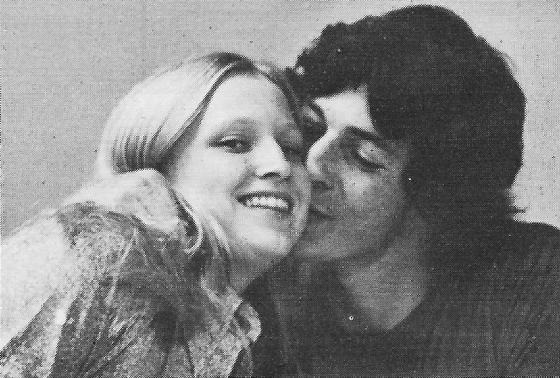
So I ask you: whose job is it in this country to wake up comatose parents? Someone better do it soon because knowing television’s potential for harm and keeping that knowledge to ourselves instead of sharing it with parents amounts to covering up a land mine on a busy street.
Jim Trelease
Prime Time TV c. 1970
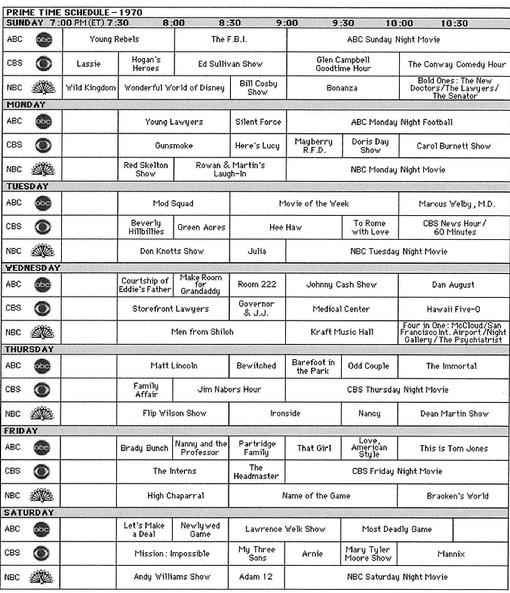
Prime Time TV, c. 1978
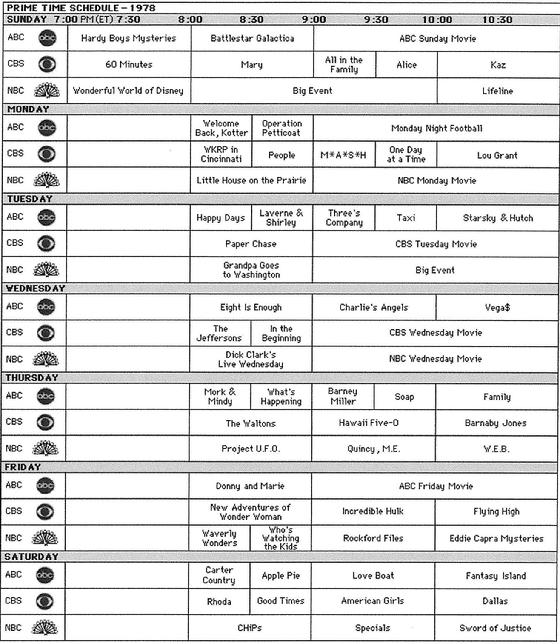
Prime Time TV, c. 2013
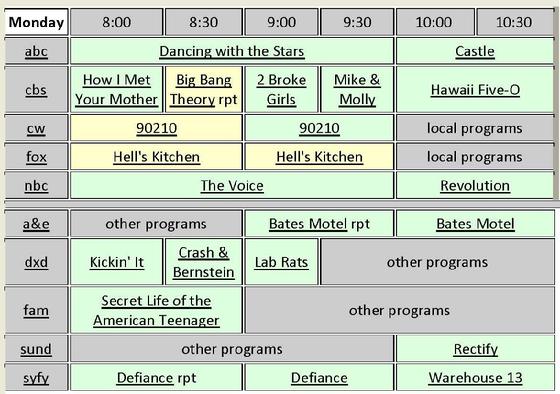
The publishers and others should quit worrying about losing customers to TV. The guy who can sit through a trio of deodorant commercials to look at Flashgun Casey or swallow a flock of beer and loan-shark spiels in order to watch a couple of fourth-rate club fighters rub noses on the ropes is not losing any time from book reading.
Raymond Chandler, 1946
Miriam Popp and Karen Theiss
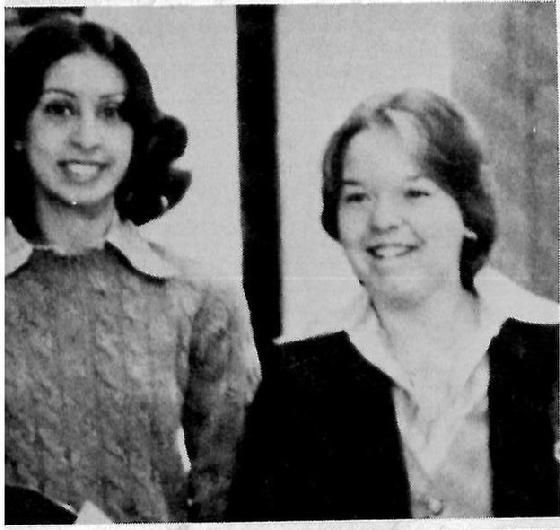
Thomas Kavenudus
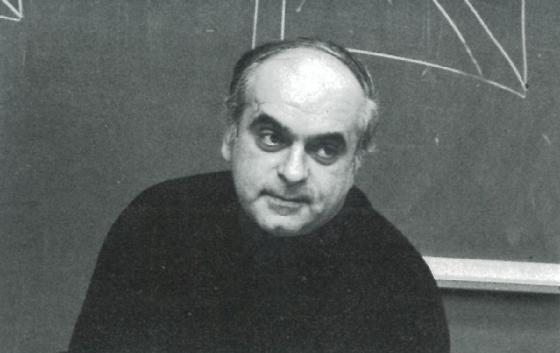
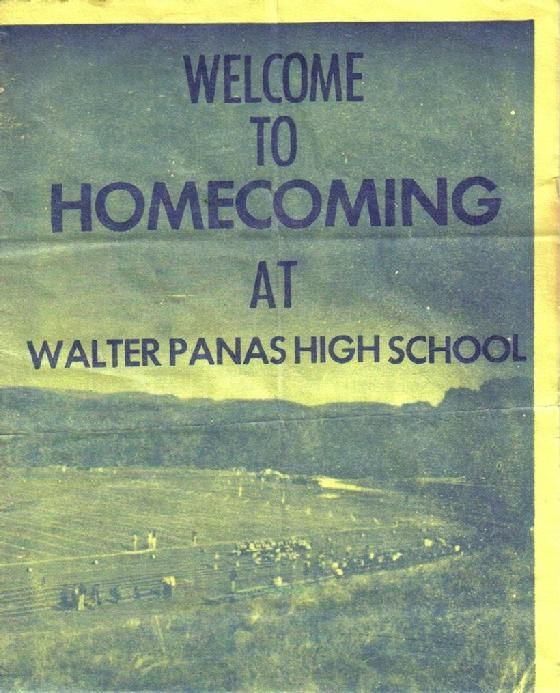
What Happened: 1978
v Camp David Peace Treaty: Egypt makes peace with Israel
v Public Service strikes in UK causes major disruption to all services
v After nearly 30 years The Volkswagen Beetle stops production having manufactured 20 million cars
v Worldwide Unemployment rises after several decades of near full employment
v Gold reaches an all time high of $200.00 per ounce
v The US Dollar plunges to record low against many European currencies
v Japanese car imports account for half the US import market following the energy crisis and increase in fuel prices that fuels demand for economy cars
v The European Court of Human Rights finds the United Kingdom government guilty of mistreating prisoners in Northern Ireland
v Sweden becomes the first nation to ban aerosol sprays that are thought to damage earth’s protective ozone layer
v Rhodesia‘s Prime Minister Ian Smith and three black leaders agree on the transfer to black majority rule
v The oil tanker Amoco Cadiz runs aground on the coast of Brittany, causing an ecological disaster with an oil slick 18 miles wide and 80 miles long covering 200 miles (320 km) of Brittany coastline
v Serial killer David Berkowitz, the “Son of Sam,” is sentenced to 25 years to life in prison
v The U.S. stops production of the Neutron Bomb (kills people but leaves buildings and infrastructure standing)
v The first Susan B. Anthony Dollar is minted
v The Cult leader Jim Jones instructs 400 members of his church, “People’s Temple”, to commit suicide
v Israel attacks southern Lebanon following bus hijacking in Tel Aviv
v A powerful magnitude 6.5 earthquake hits Thessaloniki, Greece
v Due to poor Cold War Relations United States bans sale of latest computer technology to Soviet Union
v Pope Paul VI dies at age 80
v John Paul I becomes Pope on August 26, 1978 and dies just 33 days later on September 28, 1978
v Cardinal Karol Wojtyla becomes Pope John Paul II
v Britain launches the Motability scheme to provide cars for disabled people
v World’s Population Estimated at 4.4 billion
v Dominica gains independence from Great Britain
v Karl Wallenda, founder of the Flying Wallendas, dies after falling off a tight-rope
v Argentina wins 1978 World Cup in Argentina
Technology: 1978
v Illinois Bell Company introduces first ever Cellular Mobile Phone System
v Space Invaders Launches Craze for Computer Video Games
v The first computer bulletin board system BBS is created
v 98% of all American homes have a television
v First Test Tube Baby is born in England (a girl, Louise Brown) from in vitro fertilization
Popular Culture: 1978
Popular Films:
v Grease
v Saturday Night Fever
v Close Encounters of the Third Kind
v National Lampoon’s Animal House
v Jaws 2
v Heaven Can Wait
v Star Wars Episode IV: A New Hope
v Revenge of the Pink Panther
v The Deer Hunter
v Academy Award, Best Picture: Annie Hall, Charles H. Joffe, producer (United Artists)
Popular Musicians:
v Bee Gees with ” Night Fever and Stayin Alive “
v Paul McCartney and Wings
v John Travolta and Olivia Newton-John
v Rolling Stones
v Commodores with ” Three Times a Lady “
v Boomtown Rats
Record of the Year: “Hotel California,” Eagles
Album of the Year: Rumours, Fleetwood Mac (Warner Bros.)
Song of the Year: “Love Theme From A Star Is Born” (Evergreen), Barbra Streisand and Paul Williams, songwriters
Popular TV Programs:
v Happy Days
v Little House on the Prairie
v The Rockford Files
v Good Morning America
v Jim’ll Fix It (UK)
v Saturday Night Live
v Wheel of Fortune
v Charlie’s Angels
v Quincy, M.E.
v The Muppet Show
v CHiPs
v The Love Boat
v Three’s Company
Music: 1978
With funk, disco, punk, and New-Wave all in high gear, 1978 was the 70’s last great hurrah. Blondie, Elvis Costello, and the Jam were all near the peak of their careers; The Cars, The Police and XTC joined the New-Wave onslaught with strong debut albums, and Todd Rundgren adapted well to the new aesthetic. Soft-rock singer-songwriters were waning, but Janis Ian‘s talents were intact. Meanwhile, ACDC had matured into a great heavy metal band, and The Who led the dinosaur rockers with one last great album before the tragic death of Keith Moon.
Disco may never have been great art, but for what it’s worth some of the best disco albums date from 1978. Chic’s C’est Chic and the Bee Gees’ Saturday Night Fever (released in 1977, but all over the charts throughout the year) are probably the best examples. Rock stars like the Rolling Stones and Rod Stewart turned to disco and promptly scored major hits, although Aretha Franklin and Martha Reeves bombed with the approach. First-rate soul and R & B was still coming from older acts like Ashford & Simpson, the Isley Brothers, the Jacksons, and newly independent artists Chaka Khan, Patti LaBelle, and Bonnie Pointer.
On the down side (as though the above isn’t enough of a down-side), a lot of important artists just took the year off: Led Zeppelin, John Lennon, Joni Mitchell, and most notably Stevie Wonder. The Beach Boys, James Brown, Eric Clapton, and Bob Dylan all probably should have taken the hint, but didn’t. Frank Zappa made a damned fool of himself with “Baby Snakes.” Black Sabbath was floundering. Meanwhile, the Ohio Players were falling apart, and Prince‘s debut album wasn’t exactly impressive. All of that, and the sputtering momentum of the newest innovations, didn’t bode well for the coming years. (courtesy of Wilson and Alroy’s Record Reviews)
Sports 1978
Super Bowl
Dallas d. Denver (27-10)
World Series
NY Yankees d. LA Dodgers (4-2)
NBA Championship
Washington Bullets d. Seattle (4-3)
Stanley Cup
Montreal d. Boston (4-2)
Wimbledon
Women: Martina Navratilova d. C. Evert (2-6 6-4 7-5)
Men: Bjorn Borg d. J. Connors (6-2 6-2 6-3)
Kentucky Derby Champion
Affirmed
NCAA Basketball Championship
Kentucky d. Duke (94-88)
NCAA Football Champions
Alabama (AP, FW, NFF) (11-1-0) & USC (UPI) (12-1-0)
World Cup
Argentina d. Holland (3-1)
Tommy Scordato
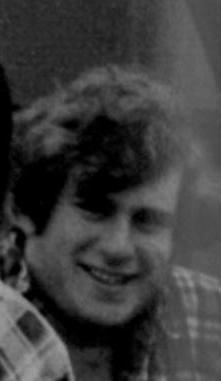
Yearbook 1978, Scord to Soos
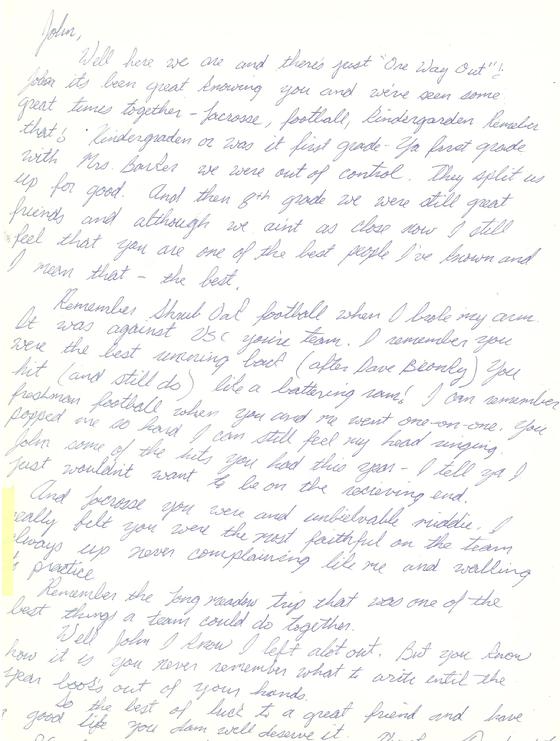
Tommy, Keegs, Billy, Shawn, John, Joe, Kevin, Billy, Johnny G. Allman Brothers Concert, c. 1983
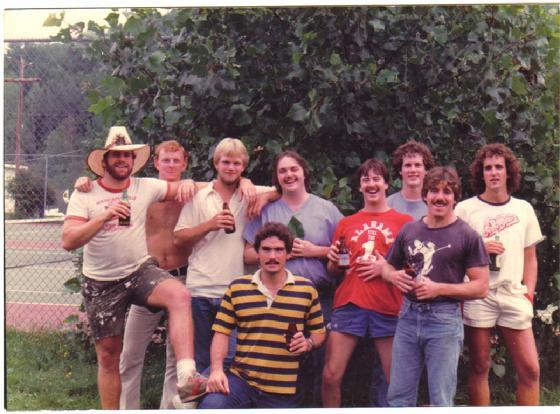
On its eponymous debut album, the Allman Brothers Band put time-tested ingredients together in a new way and used maverick instrumentation to create a fresh, funky sound.
By John Edward Hasse
Nov. 1, 2019 1:23 pm ET
The Allman Brothers Band’s eponymous debut album, released Nov. 4, 1969, rose to the level of classic art, pushing the boundaries of electric guitar, rock and improvisatory American music to establish the Allman Brothers as one of the foremost rock bands in history.
As teens in Florida in the 1960s, Duane and Gregg Allman latched onto late-night broadcasts from influential radio station WLAC in Nashville: blues and R&B from the likes of B.B. King, Muddy Waters and Jackie Wilson. Inspired, they took up musical instruments and played in several bands—including the Allman Joys in Florida and Hour Glass in Los Angeles—before establishing the Allman Brothers Band in March 1969.
At a time when the blues had reached its largest popular audience and just days before the Woodstock Festival in August 1969, the band made its maiden recording. The biracial band—the brothers, plus Dickey Betts, Berry Oakley, Butch Trucks and Jai Johanny “Jaimoe” Johanson—put time-tested ingredients together in a new way, creating a fresh, funky sound with smoking solos, inspired slide-guitar, two-guitar contrapuntal and synchronized lines and double drummers playing polyrhythms. Along with such guitarists as Jimi Hendrix and Eric Clapton, the Allman Brothers Band expanded rock from primarily a vocal genre to one spotlighting instrumental virtuosity as well.
Music critics dubbed the Allmans the first of the “Southern rock” bands, but guitarist Betts told writer Alan Paul “I think it’s limiting. I’d rather just be known as a progressive rock band from the South.”
I listened closely for the first time in decades and was struck again by that first album’s musicality, originality, and genre-blending of rock, blues, R&B, jazz and even Latin conga rhythms.
A major innovation was the sextet’s maverick instrumentation, with two lead guitarists, Duane Allman and Mr. Betts, and two drummers, Messrs. Trucks and Johanson, complementing Gregg Allman on vocals and Hammond B-3 organ and Mr. Oakley on bass. Duane and Dickey’s often-harmonizing twin leads were signatures of the band’s sound.
Duane Allman spun out clean, fluid, well-shaped, single-note lines. When “vocalizing” his guitar by bending pitches—a lone, crying blue note or a chord slipping upward or downward—he could raise goosebumps. Despite his abbreviated life—he was killed in a motorcycle accident in 1971 at age 24—he entered the pantheon of rock heroes.
Drummer Johanson, a jazz devotee, sparked Duane’s reverence for Miles Davis and John Coltrane. In a year when jazz artists such as Davis were incorporating rock into their music, here was a rock band flipping the script by imbuing its sound with a jazz sensibility through virtuosity, polyrhythms and improvisation.
Complex meters such as 5/4 and 9/8 were popularized by Dave Brubeck’s best-selling 1959 album “Time Out” and used by a few “prog-rock” bands. The Allmans’ album offers several unusual time signatures: “Black Hearted Woman” switches among 7/8, 2/4 and 4/4 and “Whipping Post” alternates between 11/8 and 6/8 meters, creating contrast and keeping the listener thrillingly off-balance.
Throughout the album, the players sound, with their deep grooves, like roadhouse vets. The slowest cut and one of the best—the dark lament “It’s Not My Cross to Bear”—features Duane’s stabbing crying-notes and his two perfectly paced solo statements. With its melodic repetition, guitar vibrato, looping bass line, and long two-chord vamp, “Dreams” creates a hypnotic mood. “Black Hearted Woman” includes a duet between conga and trap drums and what can only be described as a primal vocal wail. The band makes Muddy Waters’ “Trouble No More” uniquely their own by changing the beat and embedding original motifs behind Duane’s sizzling slide guitar. In the climactic final track, “Whipping Post,” you hear double-guitar harmony, a pulse-raising RAT-a-tata-tata beat, two memorable guitar solos, and a dizzying melodic climb to the skies.
In “Whipping Post,” the lyrics of principal songwriter Gregg Allman evoke a certain Southern rebel youth of dive bars, wooden dance halls, and faithless lovers. His passionate, whiskey-soaked voice instantly grabs your attention:
She took all my money, wrecked my new car.
Now she’s with one of my good time buddies,
They’re drinkin’ in some cross-town bar.
Sometimes I feel, sometimes I feel,
Like I been tied to the whipping post.
The Brothers’ debut involved little studio wizardry, enabling them to perform these songs on tour. Indeed, their 1971 “At Fillmore East,” including a 23-minute version of “Whipping Post,” ranks among the most celebrated live rock recordings ever. You can compare their first, cleanly recorded album, tight as a sailor’s knot, with the spontaneity and extended jams of their Fillmore double-disc set.
Both are American classics.
—Mr. Hasse is curator emeritus of American music at the Smithsonian Institution. His books include “Beyond Category: The Life and Genius of Duke Ellington” (Da Capo) and “Discover Jazz” (Pearson).
Valene Otice and Carrie McElroy
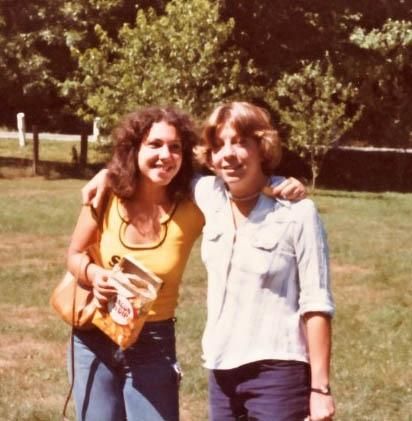
THE YEAR THAT REALLY CHANGED EVERYTHING
The Spirit of ’78, Stayin’ Alive
By Kenneth S. Baer
Sunday, July 13, 2008
©The Washington Post
Everyone seems to be telling us that if you want to understand 2008, you have to look back 40 years to 1968. “It’s the year that changed everything,” wrote Newsweek last November. Seen through tie-dye-tinted glasses, Iraq is the new Vietnam, Barack Obama is the new Bobby Kennedy, and bloggers are the new student activists. But are we commemorating the right year? If we really want a time that defined the way we live now, we should look back not to the romance and trauma of the ’60s but to the gloriously tacky ’70s, to the year that made modern America — 1978.
Look beyond the year’s bad disco and worse clothes; if you peer deeply into the polyester soul of 1978, you can see the beginnings of the world we live in today. Start with politics. Two weeks into that year, on Jan. 13, former vice president Hubert H. Humphrey died, but it took six more months before the big-government liberalism that he embodied was buried. In June, California voters backed Proposition 13, which slashed property taxes and capped tax increases, thereby marking the start of conservatism’s rebirth — and the beginning of the long end of New Deal liberalism. People had good reason to be irked at Washington, too. Voters were fed up with rising tax rates (heavily fueled by inflation) and an inefficient government that was seen as wasting their dollars. The Yankelovich poll found that 78 percent of Americans agreed with the statement, “Government wastes a lot of money we pay in taxes,” an 18-point jump from 1968.
This anti-government sentiment propelled successful efforts to limit taxing and spending in 13 states and prompted 23 state legislatures to call for a constitutional convention to consider a balanced-budget amendment to the Constitution. The sour public mood, especially after the passage of Prop 13, triggered a stampede of elected officials to the right, and those who didn’t dart quickly enough were run over — such as Massachusetts Gov. Michael S. Dukakis, who lost his party’s gubernatorial primary. In fact, it was in November 1978 that the modern Republican Party — which had been on the verge of extinction after Watergate — was born. In the midterm elections, the GOP gained three Senate seats, 12 House seats and six governorships. The anti-tax, small-government worldview of its right wing was suddenly ascendant — and has dominated American politics until the present day. (Note that, even with President Bush and his party on the ropes, neither Barack Obama nor Hillary Rodham Clinton was willing to back the sort of nationalized health care that every other industrialized democracy enjoys or mention raising taxes to get rid of the massive deficit that Bush is leaving behind.)
Our year also set the contours of today’s civil rights battles. In Regents of the University of California v. Bakke, the Supreme Court ruled that rigid race quotas for university admissions were unconstitutional but that affirmative action policies designed to ensure a diverse student body were not. Americans have battled over the implications of this decision ever since, but we have come to accept diversity as a virtue in universities, corporations and throughout American life. That began with Bakke in 1978. Of course, today’s most contentious civil rights battles aren’t over race but over sexual orientation. Here, too, 1978 was pivotal.
As the year began, a handful of communities had ordinances on the books banning discrimination against gays in employment and housing. But as these measures passed, opposition mobilized, often led by the singer Anita Bryant. In 1978, the citizens of Eugene, Ore.; St. Paul, Minn.; and Wichita, Kan., voted overwhelmingly to repeal these gay-friendly laws. Even in liberal New York, Mayor Ed Koch‘s effort to expand a ban on discrimination on the basis of sexual orientation for municipal hiring never got out of the relevant city council committee.
But the most bizarre and important incident happened, perhaps unsurprisingly, in San Francisco. The city had passed its own anti-discrimination law in March. On Nov. 27, Daniel White, the lone city supervisor to oppose the ordinance, walked into Mayor George Moscone’s office and shot him dead, then proceeded to the office of Supervisor Harvey Milk — the country’s first openly gay official of any consequence — and killed him, too. More than 30,000 San Franciscans took to the streets to mourn Milk and Moscone, blaming their deaths on the anti-gay backlash. One person held a sign stating: “Are you happy, Anita?” If this didn’t galvanize the gay community, the light sentence that White received did. That year, the gay community’s first Washington lobbyist was hired, and its long struggle for equality was underway.
Politics wasn’t the only thing that began to change in 1978. Are you reading this article on your BlackBerry? That’s only possible because, in 1978, Illinois Bell rolled out the first cellular phone system — a radical new technology that promised to break the 10-year waiting list for mobile phones. That same year, the first computer bulletin-board system was created, and the first piece of e-mail spam was sent over the ARPANET, the forerunner to today’s Internet, inviting users to a computer company’s product demonstration. (No word on whether it promised to enhance the attendees’ virility.) Computers were quickly becoming more pervasive, too. VisiCalc, an early spreadsheet program, was introduced in 1978 and quickly became the first commercially successful piece of software, giving personal computers mass rather than just geek appeal. “Eventually, the household computer will be as much a part of the home as the kitchen sink,” Time magazine boldly predicted in February 1978.
E-mail spam went largely unnoticed at the time, but the year’s advances in biotechnology certainly did not. Late on the evening of July 25, in the small city of Oldham in northwest England, the first “test-tube baby” was born. Louise Brown’s arrival after in vitro fertilization, touched off a worldwide ethical debate about whether and how we should be fooling with Mother Nature. Thirty years later, IVF is commonplace, and genetic science has leapt astonishingly forward, but the scope of the debates — now focused on stem cells and cloning — remains the same.
Other eerily familiar issues from today’s headlines first appeared three decades ago. Wiretapping and national security? The Foreign Intelligence Surveillance Act — whose overhaul triggered a contentious debate last week on Capitol Hill — was signed into law by President Jimmy Carter in October 1978. Skyrocketing gas prices and national reliance on foreign oil? The country’s first comprehensive national energy program was signed into law at the end of 1978 — but only after 18 months of contentious logrolling in Congress. You can find the roots of some of today’s biggest foreign policy challenges in 1978, too.
A Middle East roiled by Islamist extremism? Nineteen seventy-eight marked the beginning of the end for the shah of Iran, soon to be swept aside by the Shiite radicals led by Ayatollah Ruhollah Khomeini — a man whose example would help pave the way for a new generation of Sunni fanatics also angry about the U.S. role in the Middle East. But while 1978 was a rotten year for U.S. efforts to prop up the shah, it was a far better one for Arab-Israeli peacemaking. Not only did the otherwise hapless Carter help broker the watershed Israeli-Egyptian peace treaty at Camp David, the summit also produced “A Framework for Peace in the Middle East,” a much more ambitious document explaining how Israelis, Palestinians and Jordanians would work out their own conflicts over the next five years. That time horizon proved a little ambitious, but a precedent had been set: Since 1978, Arabs and Israelis have expected the U.S. president to be personally and deeply involved in any painful deal-making.
Then as now, the Middle East got the most headlines, but it was what was happening in the Far East that would most radically shape the world. After years of near-total isolation, China decided to join the rest of the world, setting out on what its rulers called a “New Long March” to become a world power by the end of the century. Under the leadership of Deng Xiaoping, Mao’s heir, China ratified a peace and friendship treaty with Japan and reached out to its traditionally wary Asian neighbors. At home, it took momentous early steps toward capitalism by beginning to dismantle its agricultural communes, allowing peasants to sell their crops and pocket the profits.
The most dramatic sign of China’s new openness was announced simultaneously in Beijing and Washington in December: The United States formally recognized China, broke its longstanding recognition of Taiwan and normalized relations with the communist titan. This momentous decision helped propel China into the modern world, turn it into a rival — if not an enemy — of the United States and intertwine the two countries’ economies. Last year, U.S. trade with China was $386 billion, up from $1 billion in 1978. There is not a person reading this article who doesn’t own a Chinese product. The rise of China may not be as sexy as the student uprisings of 1968, and the passage of Prop 13 may not pack the same emotional punch as the tragic campaign of RFK. But from politics to technology, from civil rights to foreign policy, 1978 marked the start of the age we live in. Thank God, disco didn’t survive.
(Courtesy of Kenny Dahl)
Graduation Day 1978: Betsy Pines, Donna Duchene, Ellen Boyle, Rose Calcutti, Jeanne Dondero, Michele Ruina
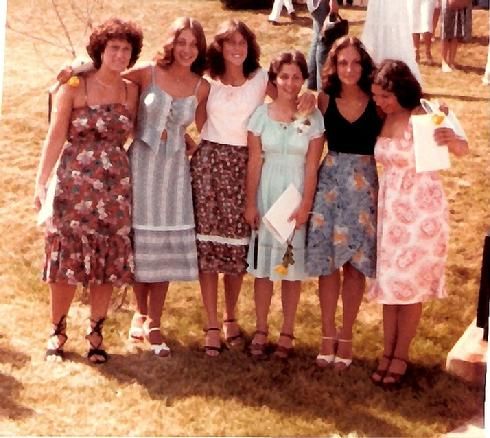
Kenny Dahl and Scott Klarer: Swearing In, Scott's Re-enlistment
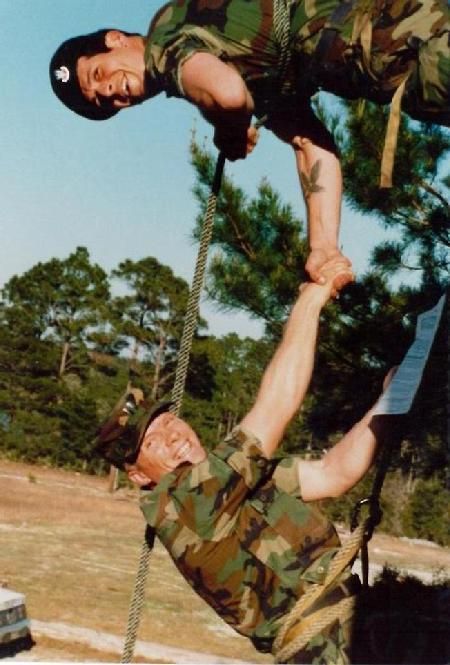
10th ReUnion, 1988
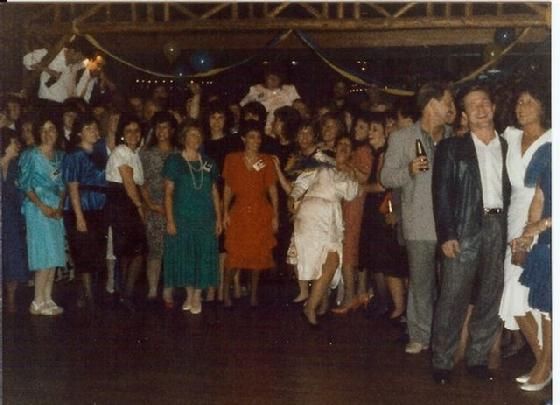
Kristie Hearle and Glenn O'Neill - 20th Reunion, 1998
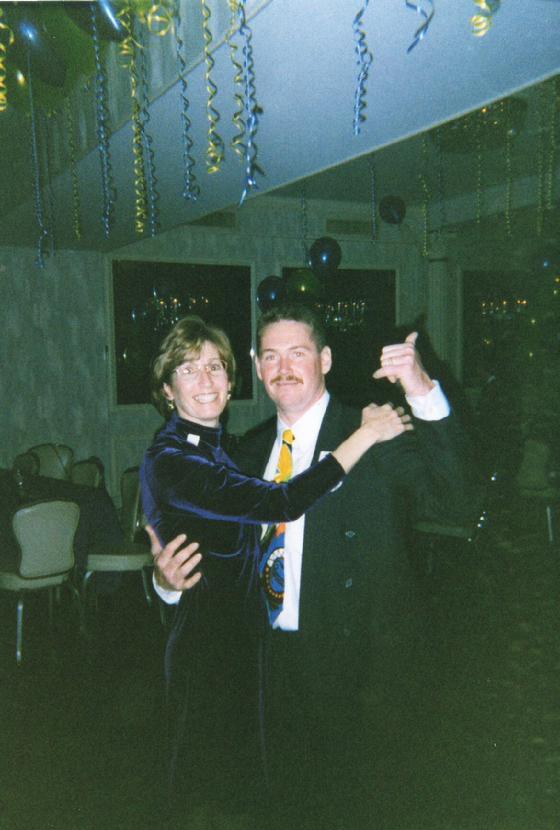
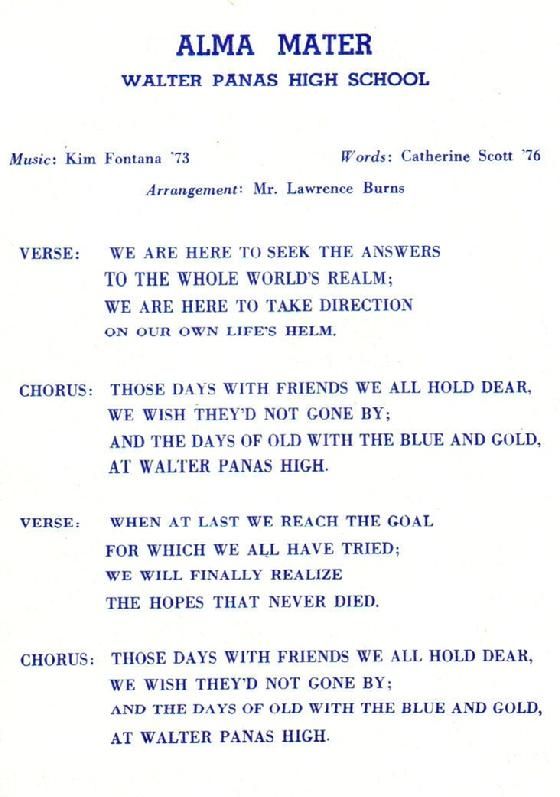
Kelly Godridge and Ellen Jackson
